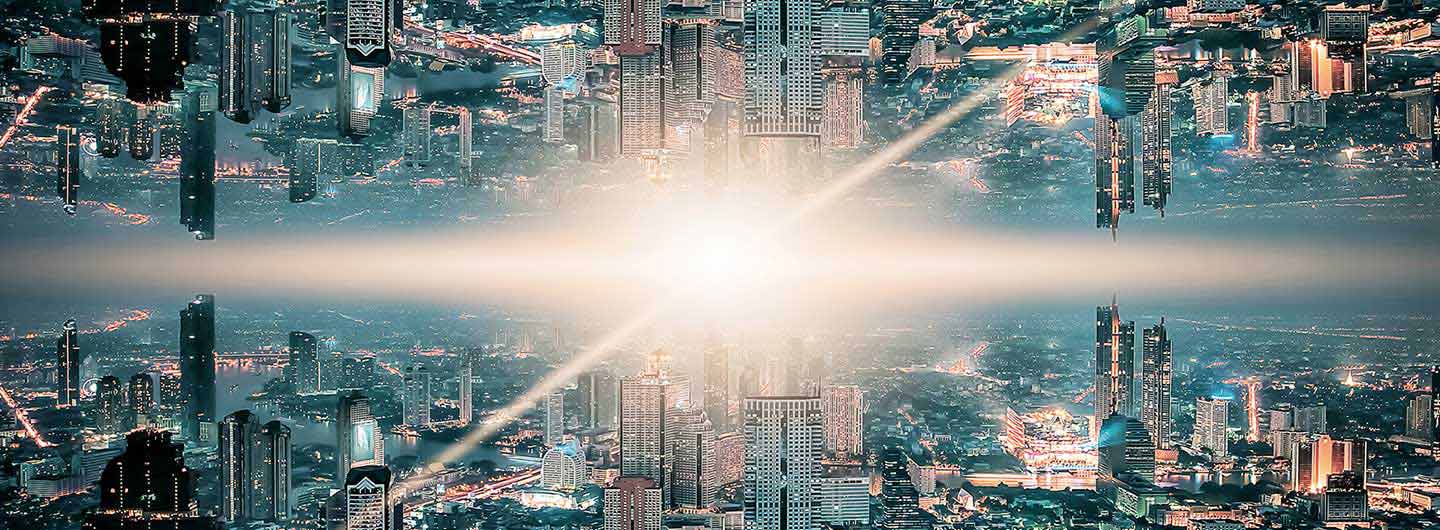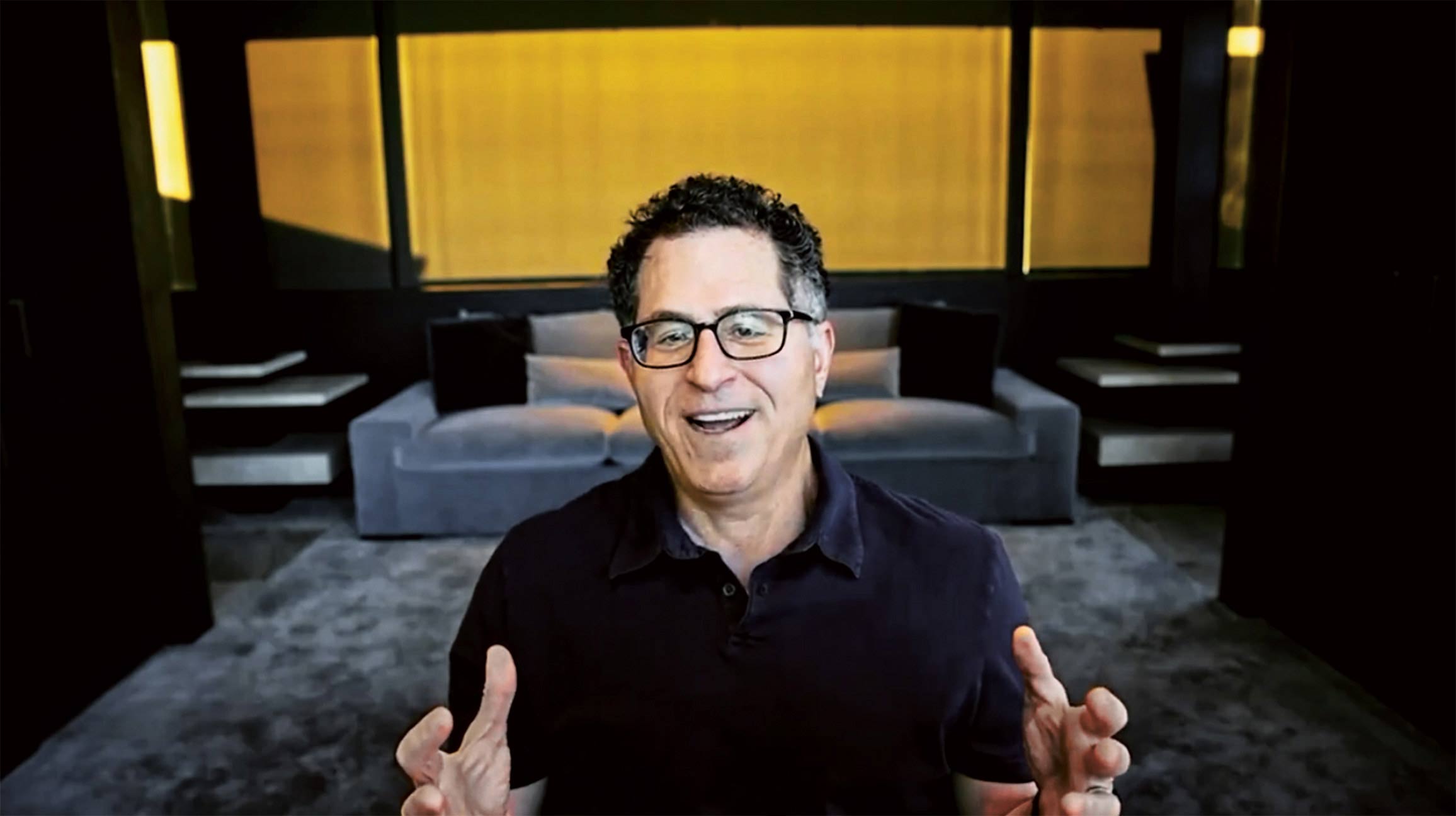
The term metaverse was coined in the early nineties by the science-fiction author Neal Stephenson in his novel Snowcrash, in which people flee the dystopian reality of the 21st century by entering a parallel universe in the form of an avatar—another creation attributed to the story. Nowadays, we’re close to making this fantasy a reality.
The analogue and the digital worlds are becoming more intertwined. This has led to some exciting developments that will affect our private lives as much as our working lives.
The first noticeable attempt at doing so was made in 2003 by internet company Linden Labs, when they launched “Second Life”. As its programmatic name suggests, it’s a place where users can live and do business in a virtual world under a digital alias. It’s populated to this very day by hundreds of thousands of regular avatars. There was a time when it was trendy to run your own virtual farm. There were whole families that were busy feeding their cows, milking them for maximum profit. Luckily enough, the real world was spared from any greenhouse gases.
Welcome to the metaverse, alternate digital realities where people work, play, and socialise. You can call it the metaverse, the mirror world, the AR Cloud, the Magicverse, the Spatial internet, or Live Maps, but one thing is for certain, it’s coming and it’s a big deal.
Cathy Hackl, Tech Futurist
New Stages.
The most popular trendsetter for this enhanced reality is the gaming industry. In the survival game “Fortnite” especially, the universe is being expanded on consistently, promoting growth in both internal and external value chains. For example, players can watch exclusive film scenes from the Star Wars franchise, while equipping their avatar with the look to go with it. American rapper Travis Scott’s concert in Fortnite was seen by 28 million viewers.
Although the virtual world might not rock as much, there are some obvious parallels to our world of work. Who hasn’t participated in conferences, congresses and festivals held in an online format in the past year?
Does this mean that, in future, we will all have multiple identities that we live out in various digital universes? Will we no longer only have life coaches, but also multi-personality coaches? One thing’s for sure, and that is that these developments are not going to make life any easier.
Hello Holo.
The Kardashians are already one step ahead. For her 40th birthday, Kanye West gave his wife a hologram of her dead father that congratulated her posthumously. And there’s lots more to come. At the moment, Samsung is creating what they call NEONs—humanoid friends made to live with us. The already available Replika app provides an AI-based companion. Three million downloads (as of November 2020) prove that the interest in “digital companions” is huge. If you have always dreamed about having your very own AI representative, you may like Synthesia.io. Type in any text, choose one of the default characters or make your own, and, in only a few minutes, you will receive your very own video of a presenter reading your message in 38 languages.
While AI is being used to provide companions at home, at the office, it will take over routine tasks as a virtual assistant.
The digital twin concept goes even further: ranging from construction data used for project simulation to the operation of entirely virtual factories, allowing us to test or optimise entire construction processes.
The benefit is clear: only what works in a testing environment can work in reality, putting an end to faulty constructions. Digital models can also serve as inviting 3D virtual reality previews of companies for potential business partners or applicants.
The mix prevails.
We’re already used to meeting on different levels of reality. Technicians who are instructing workers on how to use machines or repair them use virtual guidebooks and smart glasses that augment device parts into the environment. More and more smart interfaces work with Edge computing, 5G networks and readily available cloud services to scan and reproduce any kind of environment.

In 2020, Bechtle held its “CMPTNC DY” on a digital stage for the first time. The customers’ feedback was overwhelming.
Best of all, internationally renowned figures from IT such as Michael Dell and Antonio Neri, CEO of HPE and Pat Gelsinger and Thomas Kurian, CEOs of VMware and Google Cloud were present—as themselves, and not their avatars.
These individual examples do not make up a metaverse on their own, but they are fragments that will continue to grow together , but without ever truly becoming one. Although Facebook has been able to leverage its market position with project “Horizon” and other global players are also making the move: The knowledge on the subject is spread out so diversely that we will probably end up with islands, countries and continents in the digital parallel universe, rather than one uniform platform, meaning that companies of any size will be able to partake in the market. Whether and how these things will be cosmically married, only time can tell. And who knows how many versions of reality we will be provided with by quantum computers.
The VR Business Club is the largest dialogue and matchmaking platform on virtual reality, augmented reality and mixed reality in Germany. The club is seated in the Bechtle IT system house in Karlsruhe, where the Digital Workplace Showroom is located. Here, visitors are welcome to try out immersive technologies—and possibly find inspiration for their own digital parallel universes.
Contact person.
Bechtle update editorial team
update@bechtle.com
Newsletter.
Get the best from the Bechtle update every six weeks directly into your mailbox. Click here to register:

This is an excerpt of an article in the print edition of Bechtle update 03/2020.